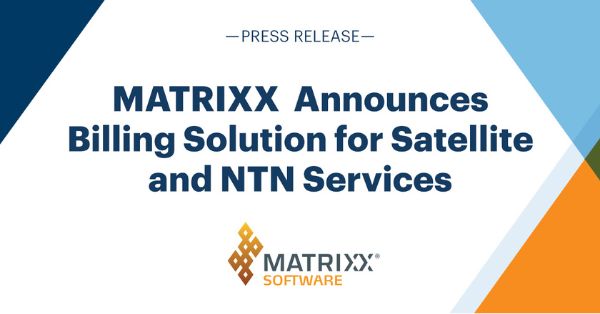Alaska Airlines adopts Starlink LEO for low-latency inflight Wi-Fi
Alaska Air Groups move to deploy SpaceX Starlink across Alaska Airlines and Hawaiian Airlines by 2027 signals a decisive pivot to low-latency, LEO-based inflight connectivity for U.S. carriers.
Why low-latency LEO Wi-Fi matters now
Inflight WiFi has moved from perk to productivity platform, and latencynot just bandwidthnow defines user experience for video conferences, collaboration tools, and gaming. By standardizing on Starlinks low Earth orbit (LEO) network, Alaska is targeting ground-like performance gate-to-gate across regional, narrowbody, and widebody fleets. The decision also raises the bar for long-haul routes out of Seattle-Tacoma International Airport, where polar tracks to Europe and Asia often expose the limits of geostationary (GEO) systems.
Competitive landscape and multi-orbit pressure
Most large U.S. airlines rely on GEO or hybrid services from Viasat, Intelsat (Gogo/2Ku), Panasonic Avionics, or Anuvu, often with paid tiers and variable performance. Hawaiian Airlines was the first major carrier to adopt Starlink; Alaskas fleet-wide adoption scales LEO into the mainstream and pressures rivals to accelerate multi-orbit roadmaps, including emerging LEO partnerships with Eutelsat OneWeb. Expect RFPs to explicitly require low-latency, polar coverage, and clear SLAs for full-flight loads.
How Starlink LEO and ESA antennas power faster IFC
Starlinks architecture combines thousands of LEO satellites with electronically steered antennas (ESAs) engineered for aero use.
Performance: sub-100 ms latency and 500 Mbps per aircraft
Alaska cites sub-100 ms latency and up to 500 Mbps per aircraft, enabling real-time messaging, cloud apps, and streaming on multiple devices without gating performance to a handful of users. Compared with GEO solutions that can exceed 600 ms round-trip latency, LEO meaningfully improves interactive applications and page-load responsiveness.
ESA hardware, ARINC 791/792 installs, and MRO integration
ESAs have no moving parts, reducing mechanical failure risk and maintenance compared with traditional gimbaled antennas. The smaller radome footprint lowers drag and weight, improving fuel efficiency, while ARINC 791/792 installation standards help streamline certification and MRO workflows. Alaska projects material fuel savings from the lighter kit, translating into lower operating costs and reduced emissions.
Seattle hub implications and long-haul coverage
Seattle is central to Alaskas strategy, with long-haul international expansion and northern routes that stress conventional IFC architectures.
Polar coverage and high-latitude resilience
LEOs dense, multi-beam coverage improves continuity over high latitudes where GEO footprints thin and handoffs can degrade service. For transpacific and transatlantic departures from SEA, consistent throughput and stable latency become a differentiator for corporate travelers and high-yield segments.
Gate-to-gate activation and consistent service
Because LEO links activate rapidly and ESAs lock quickly, airlines can deliver connectivity from boarding through taxi, avoiding the dead zones that frustrate passengers and undercut crew operations and digital retail moments.
Timeline to 2027, fleet rollout, and readiness
Installations begin ahead of a 2026 service launch with full fleet completion targeted for 2027 across regional, narrowbody, and widebody aircraft.
STCs, FAA coordination, and certification plan
Alaska will need supplemental type certificates (STCs) across Boeing 737 variants, Embraer E175s, and incoming widebodies from the Hawaiian fleet, with line-fit options considered for future deliveries. Coordination with the FAA, SpaceX, and MRO partners will be critical to align hangar time, parts availability, and software baselines.
Captive portal, loyalty, and QoS integration
A unified captive portal, loyalty recognition, and policy-based QoS will be required to manage service tiers and ensure business-critical apps perform, especially on full flights. Alaskas loyalty integration and premium co-brand card strategy point to expanded free tiers for elite members and targeted offers for the broader base.
Sustainability gains and IFC economics
Connectivity choices carry fuel, weight, and lifecycle implications that now figure into airline ESG and cost models.
Fuel savings and CO2 reductions from lighter ESAs
Lighter ESA hardware and smaller radomes reduce drag and can save hundreds of thousands of gallons of fuel annually, potentially avoiding several thousand tons of CO2 per year for a fleet this size. Lower maintenance and faster installs also minimize aircraft downtime and inventory costs.
Total cost of ownership and revenue impact
While LEO capacity and hardware pricing are evolving, improved take rates and higher NPS can lift ancillary revenue, card spend, and partner economics. The risk: if free and fast becomes table stakes, airlines must monetize via loyalty, advertising, and bundled services rather than paywalls alone.
Market shift to LEO-first and multi-orbit IFC
Alaskas decision accelerates a broader market transition toward LEO-first or multi-orbit inflight connectivity.
Vendor ecosystem and partnerships
Vendors are racing to combine GEO, MEO, and LEO for coverage and resiliency, with Eutelsat OneWeb, Panasonic Avionics, and Intelsat announcing multi-orbit IFC offerings. For airlines, the strategic choice is single-provider LEO for simplicity and performance, or multi-orbit for redundancy and supplier diversification.
Standards, zero-trust security, and peering
Expect more emphasis on ARINC installation standards, zero-trust onboard networks, and peering optimizations with clouds and CDNs to reduce latency further. Cybersecurity baselines, content filtering, and lawful intercept requirements must be baked into SLAs and airline risk frameworks.
Risks, resiliency, and capacity management
Execution, resiliency, and capacity management will determine whether ground-like IFC holds at scale.
Peak-load capacity and QoS controls
High take rates can stress per-aircraft capacity; airlines need robust QoS, traffic shaping, and telemetry to protect real-time apps. Clear service commitments for 100% load scenarios will matter more than headline speed.
Operational resilience, backhaul, and regulatory factors
LEO reliance introduces constellation, gateway, and space weather dependencies; multi-path backhaul and roaming fallbacks should be defined. Airlines will also watch regulatory developments around spectrum, antenna approvals, and cross-border operations.
Next steps for airlines, enterprises, and vendors
Now is the time to pilot LEO-based IFC strategies and align customer experience, IT, and operations around low-latency connectivity.
Actions for airlines and lessors
Run A/B trials on key routes, model multi-orbit versus single-LEO TCO, and lock STC slots early. Update RFPs to include latency targets, polar performance, cybersecurity requirements, and energy footprints.
Guidance for enterprises and IT leaders
Assume broadband-grade inflight access in 2026+ travel policies and optimize collaboration stacks for low-latency links. Negotiate corporate travel benefits tied to free WiFi and prioritize carriers with consistent gate-to-gate performance on long-haul routes.
Recommendations for vendors and CSPs
Integrate with airline loyalty and payment systems, offer predictive QoS analytics, and push CDN and cloud edges closer to aero gateways. Position multi-orbit solutions as risk hedges while matching LEO on user experience.































